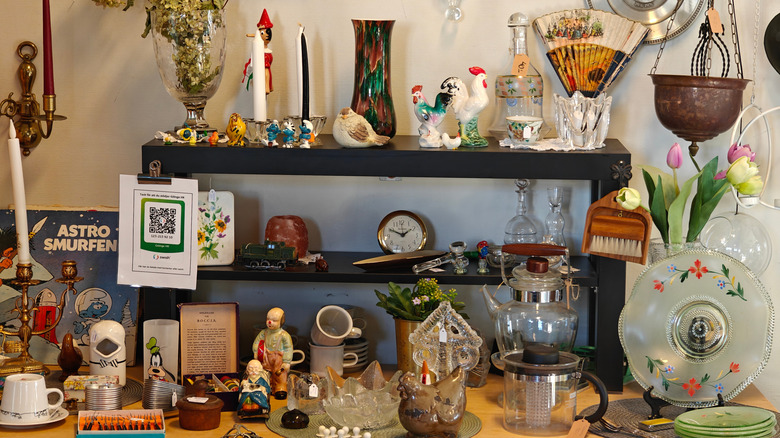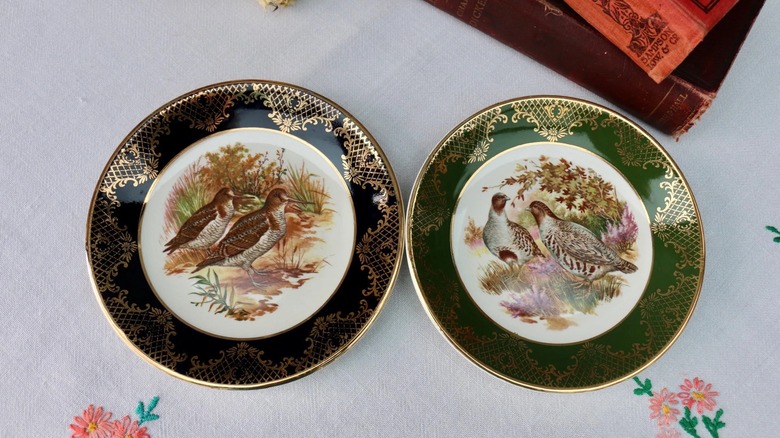The Seasonal Decor You're Overlooking At The Thrift Store
We may receive a commission on purchases made from links.
If you open your cabinets and you find lame plastic plates and Solo cups, you should consider getting some new dishware. It's a great opportunity to add some distinct style to your kitchen while complementing each season. Vintage plates work especially well for the fall. All you have to do is take a quick trip to your local thrift store and browse the options. The best vintage plates are ceramic because they do not scratch easily and often have some eye-catching artwork. If you struggle to find a full matching collection, you can assemble your own. It's become a popular trend online for people to post their mismatched china sets. Plus, it's a fun way to add character to a dinner table and even to decorate other parts of your home with pottery.
There are certain health risks you should be aware of before you get started. For centuries, lead gave the ceramic glaze on plates and cups a smooth finish. We've only recently discovered its harmful effects, especially on the cognitive development of young children, and the Food and Drug Administration did not start regulating lead use in dinnerware until the early 1970s. Unless you're an expert or you happen to find a date, it's hard to tell when a ceramic was made, which is why you should always test ceramics for lead. Most hardware stores sell lead testing kits, which contain a swab and usually a liquid agent to activate the chemical process. You'll be able to tell whether the glaze contains lead based on the swab's color change after you rub it across the ceramic surface.
Vintage dishware styles that will complement your space
Artisans throughout history have designed seasonal dishware with detailed depictions of animals. Many of the subjects are set against natural backdrops, such as freshly harvested fields or snow-covered hillsides. But this type of art wasn't always available to the masses, since the work was originally done by artisans. It wasn't until the Industrial Revolution, which began in the mid-18th century, that more people had access to ornate dishes.
In the 1850s, pheasants became one of the most common motifs in American ceramic dishware. The commonly depicted males of the species are the most flamboyant, known for their trademark green collar, reddish feathers, and long, prestigious tales. These plates are still popular, and they will add a country cottage aesthetic to most spaces. Likewise, turkey plates also grew in popularity throughout the late 19th century. These are excellent for Thanksgiving because they often depict a hefty gobbler, perhaps perched next to his hen, standing among the fallen leaves. Sometimes, there are finer design flourishes around the edges of these plates — usually bundles of hay or bunches of corn.
If you have an angler in the family, look out for trout motifs, which often depict the colorful fish frozen in the air as it leaps from a stream. There are plenty of other motifs to explore, ranging from bears eating dinner together around a table to Santa Claus guiding his sleigh. Beyond simply collecting dishware, there are plenty of other ways to incorporate ceramic art in your home, like creating your own art gallery. If you ever break a plate, you can repurpose the ceramic shards for tile designs.

